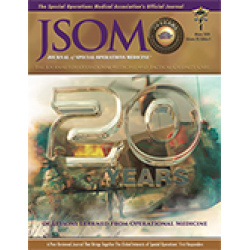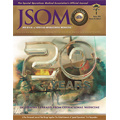Isolating Populations to Control Pandemic Spread in an Austere Military Environment
Hall AB, Dixon M, Dennis AJ, Wilson RL 20(4). 92 - 94 (Journal Article)
Background: The COVID-19 pandemic has been a struggle for medical systems throughout the world. In austere locations in which testing, resupply, and evacuation have been limited or impossible, unique challenges exist. This case series demonstrates the importance of population isolation in preventing disease from overwhelming medical assets. Methods: This is a case series describing the outbreak of COVID-19 in an isolated population in Africa. The population consists of a main population with a Role 2 capability, with several supported satellite populations with a Role 1 capability. Outbreaks in five satellite population centers occurred over the course of the COVID-19 pandemic from its start on approximately 1 March 2020 until 28 April 2020, when a more robust medical asset became available at the central evacuation hub within the main population. Results: Population movement controls and the use of telehealth prevented the spread within the main population at risk and enabled the setup of medical assets to prepare for anticipated widespread disease. Conclusion: Isolation of disease in the satellite populations and treating in place, rather than immediately moving to the larger population center's medical facilities, prevented widespread exposure. Isolation also protected critical patient transport capabilities for use for high-risk patients. In addition, this strategy provided time and resources to develop infrastructure to handle anticipated larger outbreaks.


 Español
Español 




